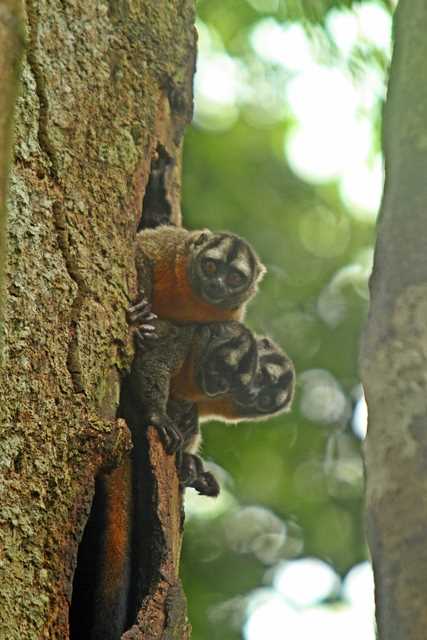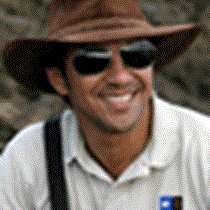Today we woke up far away from any sign of civilization, and our goal for the next few days is to literally stay away from it! Although it was really a pleasure to visit and learn from the remote communities of the Amazon, it also felt great not to see any signs of housing or any development around this area.
Belluda Creek is an isolated small tributary of the Ucayali River, which we will be exploring for the next few days. There are several species of animals that like this isolation, and we dedicated our morning looking for them. Our first outing was precisely along the river-banks of the Ucayali, along an area known as the “Aguajales”. The palm tree locally known as “aguaje” happens to be not only abundant in this particular area, but it is the favorite nesting tree for the Blue and Yellow Macaws. With their large and powerful beaks, the macaws (or any related species) break through large seeds for feeding and rip apart large chunks of the palm tree-bark to create their nests. Their colors are powerful and can be seen from a far distance, which made it somehow “easy” to spot them. We spent some time looking and photographing these beautiful birds; we then move onto find more species. As the morning progressed, we entered the creek known as Belluda, and it was then where more species such as the monk saki monkey and the nocturnal owl monkeys were also found.
As for our afternoon, we continue further into the Ucayali up-river near the confluence of a larger black-water river tributary known as “El Dorado”. The slight resemblance of “golden colored-waters” looked magnificent for photography, as the reflections of the forest against it made for a killer combination.
We also had the opportunity to stay a little bit longer than normal out in the forest; as the sun sat in the horizon, darkness came quickly and liberated a whole different set of nocturnal feeders and their predators. We then started our “caiman hunting” time, which was nothing else but spotting them using powerful beam-focused lights specially designed for this outing. The yellow reflection of the caiman eyes due their extra eye-layer known as “tapetum lucidum” gave them away, however it was still impressive to see how the naturalists were so skilled to detect even the most insignificant reflection between the bushes!
As the full evening night set upon us, we continue our way back to the ship and onto a delicious evening meal, entertained by our very local Delfin II crew with a fantastic local-music performance!







